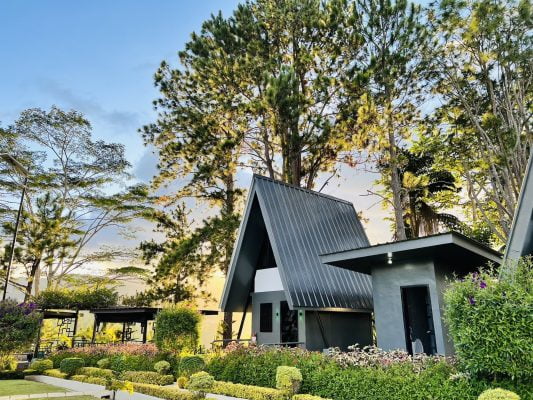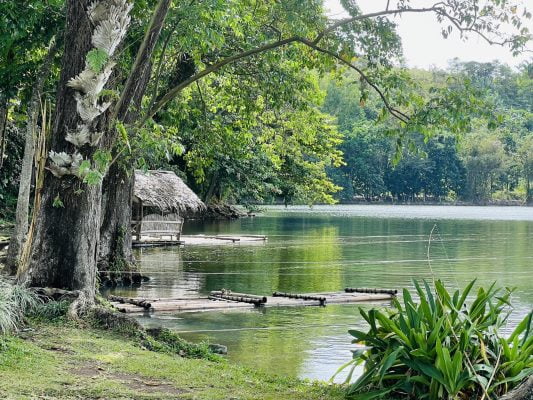
The province of Zambales is a large coastal community fronting the South China Sea on its west side. It is located in Central Luzon, neighboring Pampanga and Tarlac to its east, Pangasinan to its north and Bataan to its south. The famous Subic Bay Freeport Zone is about 10 kilometers from the town of Subic in southern Zambales and the controversial Scarborough Shoal is recognized as part of the province.
A portion of the active volcano Mt. Pinatubo is within Zambales territory and when it erupted in 1991, volcanic ash covered a vast area of the province resulting to the desert-like features that characterize its plains. More than half of the entire province is dominated by the Zambales Mountain Range, resulting to the rugged terrain punctuated by inlets and coves along the coastal areas.
Getting There and Getting Around
The provincial capital, Iba, is about a three-hour drive from Metro Manila. The Subic-Clark-Tarlac Expressway has shortened travel time to southern Zambales to two hours depending on the density of traffic. If you’d prefer flying in, Zambales is served by the Subic Bay International Airport. This works just as well since most tourist attractions in the province are located close to the airport.
Transportation within the province is pretty much as the same as the rest of the Philippines. There are plenty of car rental agencies at the airport and around the Freeport zone. Taxis are also plentiful and drivers are generally friendly and can speak English, even if rudimentary. For cheaper means of getting around, jeepneys are available in major streets and tricycles can take you through shorter distances.
Accommodations & Tourist Attractions

photo bylucyd43 on flickr
Due to the destruction caused by the Pinatubo eruption, Zambales is still recovering in terms of tourism. The beaches are slowly gaining back its water quality while the sea creatures are making their way back as well. The most prominent tourist attraction in the province is the Subic Bay Freeport Zone where resorts, aquariums, shopping centers, parks and historical sites are plentiful.
The zone is a former US Naval Base converted into a duty-free and tax free zone much like Singapore and Hong Kong. Located southwest of Zambales, the Subic Bay Freeport Zone is not a part of the province but nearby Olongapo City is an ideal base camp for tourists looking for cheaper accommodations and service businesses.
There are some decent beaches in the province, mostly located in the islands off the coast. Potipot Island is the one closest to the mainland, just a short boat ride from the resorts in Candelaria. The island boasts of pristine sands and clear blue waters which often graced by dolphins swimming in the South China Sea. Potipot Island is ideal for travelers looking for a peaceful place to put their feet up and enjoy the tropical sun.
Another nice beach is the Anawangin Cove which is extremely popular with campers. The cove has ash-colored sand lined with pine-like Agoho trees that serve as shade for beachcombers who frequent the area. Anawangin Cove is transformed into a tent city during summer weekends so it is best to come during weekdays of the early summer months to avoid the crowds.
Zambales is also a favorite spot for surfers who do not want to travel too far from Metro Manila. The northern portion of the province, San Narciso has a few great surfing spots. Most surfers converge at Crystal Beach Resort where there is a sand bank and the surf breaks at both right and left. Capones Island also features some excellent spots suited for pros due to its many reef breaks.
Wreck diving is also a very popular tourist activity in Zambales, especially in the Subic Bay area. With a good number of Japanese battleships sunk off the coast, there’s sure to be an interesting wreck waiting to be explored. At least 10 wrecks can be found off Subic Bay, including San Quentin, the oldest known wreck in the area.
Festivals

Another noteworthy annual event is the Fiesta Poon Bato (Feast of the Sacred Stone) which is dedicated to the Virgin of Peace and Good Voyage. The image of the Virgin is said be the oldest in the Philippines and has survived calamities including the Pinatubo eruption. The festival held in January lures almost a million pilgrims from all over the country.
Zambales is a beautiful province that is literally rising from the ashes, blossoming once more as an exciting destination for both local and international tourists. While its wonders are considered hidden, it’s only a matter of time before the its treasures are rediscovered and the province reclaims its former glory.






